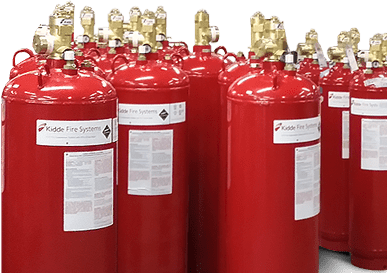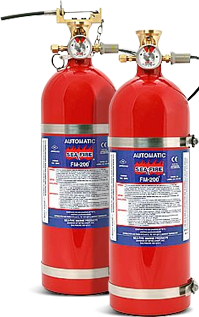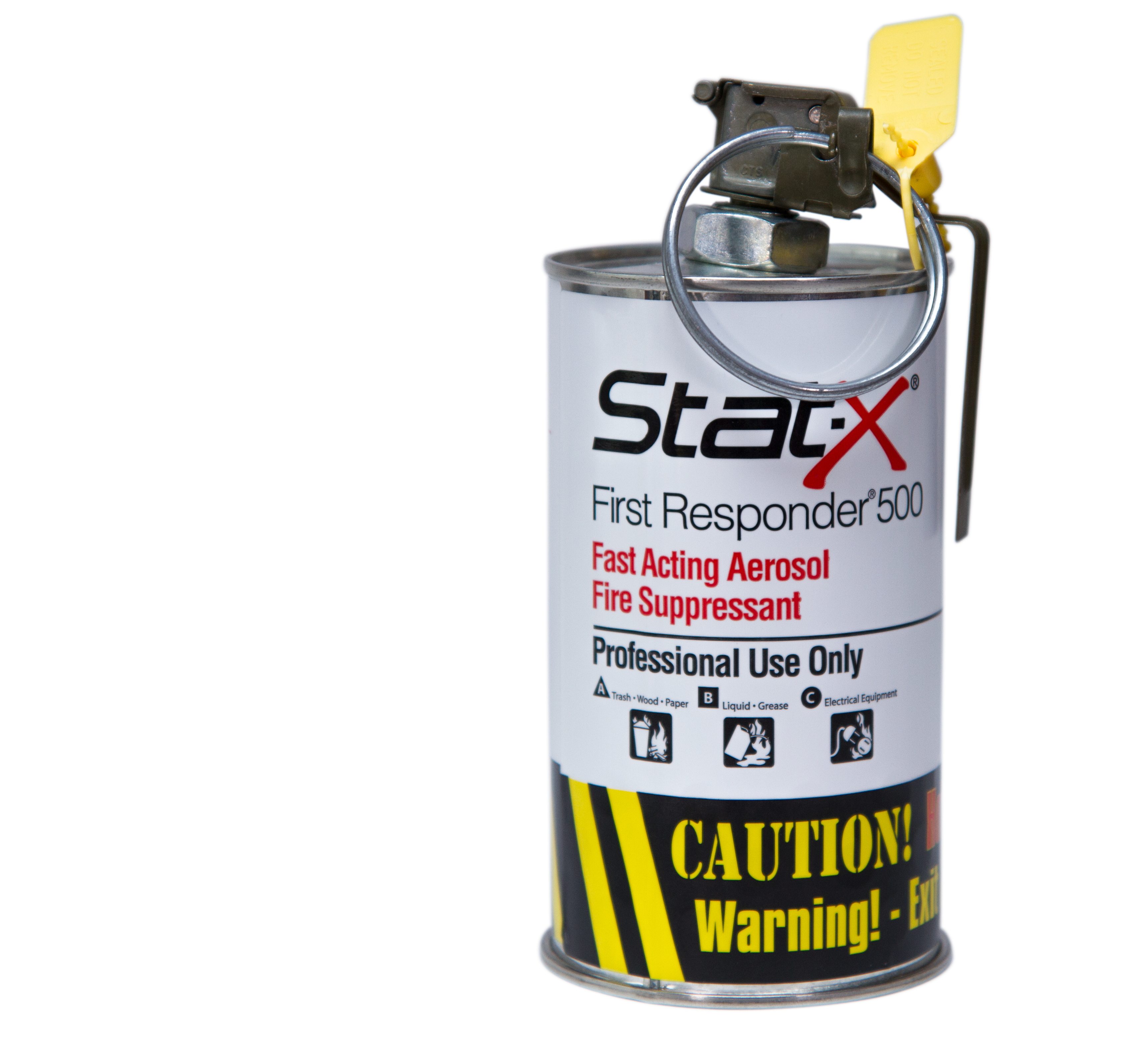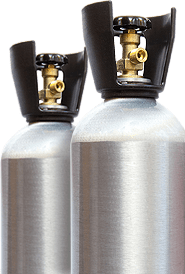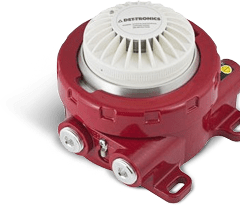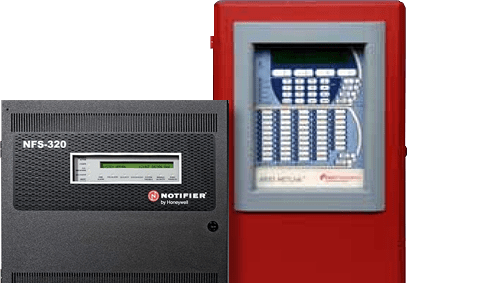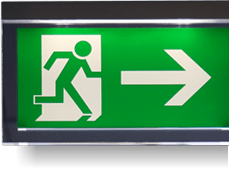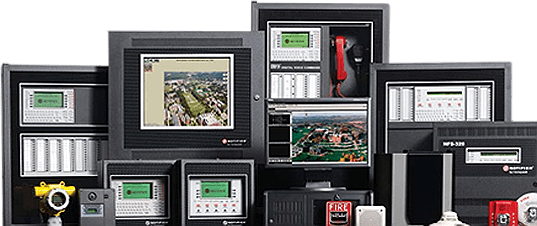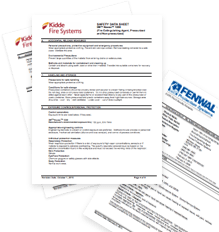Types of Fire Suppression Systems
The term "fire suppression system" and the term, "fire protection system" are often used interchangeably, but should be defined differently. For the purposes of this article, "fire protection systems" will refer to traditional automatic fire sprinkler systems, designed and installed to NFPA 13: Standard for the Installation of Sprinkler Systems. " Fire suppression systems" will refer to any other system that is designed and installed to control, suppress, or extinguish fire.
The relationship between automatic sprinkler systems and fire suppression systems is important because the latter is typically used as a substitute for the former. However, as indicated in Section 904.2 of the 2021 International Fire Code, there are some limitations when using fire suppression systems to substitute for automatic sprinkler systems:
- If an automatic sprinkler system is required by Code, the substitution of a fire suppression system must first be approved by the fire code official before it can supplant the automatic sprinkler system;
- Code "credits" generated by utilizing fire suppression instead of an automatic sprinkler system may not be taken.
These two limitations are important when deciding how and when to utilize a fire suppression system instead of an automatic sprinkler system. The provisions of the International Building Code often specify that a building be "fully sprinklered," with limited exceptions. For example, an electrical cabinet, control rooms, or CNC machine may be protected by a special hazard fire suppression system but may need a backup automatic sprinkler system so the building as a whole qualifies for the credits afforded by an automatic sprinkler system.
Another important distinction in fire suppression systems is whether they are for local application, or total flooding. In other words, a fire suppression system may protect a paint mixing station (local application) while another may protect an entire electrical switchgear room (total flooding). The type of suppression system often governs which protection scheme is the case.
What are the Types of Fire Suppression Systems
The International Building and Fire Codes recognize the following fire suppression systems in Section 904. These are listed, along with their appropriate design and installation standard. In some instances, these standards specify inspection, testing, and maintenance requirements, but, may also refer the user to other standards or reference documents.
- Wet Chemical Systems, NFPA 17A; these systems are often used for kitchen suppression
- Dry Chemical Systems, NFPA 17; these systems are often used to protect paint and other particulate hazards
- Foam Systems, NFPA 16 (foam water system), NFPA 11 (high volume expansion foams); these systems are used to protect liquid fire hazards
- Carbon Dioxide Systems, NFPA 12; these systems are used in total flooding applications in spaces that are not habitable, as carbon dioxide is hazardous
- Halon Systems, NFPA 12A; these systems were banned by the Montreal Protocol in the late 1980s—any system is a legacy system installed before this ban
- Clean Agent Systems, NFPA 2001; these are gaseous systems that are used to protect sensitive equipment—hydrofluorocarbon, inert gases, and mixtures of inert gases are used in these systems, mostly in total flooding applications
- Automatic Water Mist Systems, NFPA 750; these are water-based systems that use fine droplets of water to suppress fires more effectively because a greater surface area of water is exposed to the fire as compared to automatic sprinkler systems
- Condensed Aerosol Fire-Extinguishing Systems, NFPA 2010; these systems use a mixture of fine particulates and propellant gas to extinguish fires, and can be used in total flooding or local application systems
Fire Suppression Alarm and Monitoring Requirements
Most fire suppression systems are connected to a fire alarm system similar to the operation of an automatic fire sprinkler system. Suppression system actuation and abnormal conditions are monitored by a fire alarm system. Upon activation, the fire suppression system will alert an offsite, remote monitoring station and, when a total building fire alarm system is installed, activate local evacuation alarms and send an alarm to the remote supervising station.
Some fire suppression systems are partially or wholly hazardous to the health of occupants. For this reason, pre activation alarms are sometimes required before the system operates. Certain systems, like carbon dioxide systems, should never be used when occupants may be present.
Some condensed aerosol fire suppression products are U.S. Environmental Protection Agency (EPA) SNAP listed for use in both unoccupied and normally occupied spaces. Stat-X ® condensed aerosol fire suppression is one of these SNAP listed products.
Fire suppression systems must all have an automatic means of operation. Some systems, such as the ones that protect commercial cooking equipment, must also have a means of manual actuation.
Fire Suppression Effectiveness
Fire suppression systems work by removing one of the four pieces of the "fire tetrahedron," all of which are necessary for fire ignition and propagation. The fire tetrahedron consists of the following:
- A combustible fuel
- Heat
- Oxygen
- Unmitigated Chemical Chain Reaction
Most people are familiar with items one through three above, but most are unaware of the fourth requirement, an unmitigated chemical reaction. Arresting the chemical chain reaction is the most effective way to extinguish a fire because it is quicker than removing the fuel, reducing the heat, or reducing the available oxygen. Halon systems work almost exclusively on this principle. For new systems, only condensed aerosol systems and some clean agent systems work this way in tandem with reducing heat and oxygen concentrations.
In general, an oxygen concentration of 13% or more, by volume, is necessary to propagate a fire. Normally, air contains approximately 21% oxygen. By simply flooding a space with another gas, such as nitrogen, this oxygen concentration can be reduced so a fire is extinguished. Wet chemical and foam systems cover liquid fuel surfaces and prevent oxygen from reaching the fire, and the fire is extinguished. Caution must also be applied as reduced oxygen environments can be harmful or even fatal for human occupants.
Heat is removed by some fire suppression systems through heat convection or evaporation. Once the fuel temperature is below its fire point, which is different from the flash point, it can no longer sustain combustion.
Combustible fuels may be rendered noncombustible by layering a cover of fire suppression liquid over them. Most foam systems operate with this principle.
Conclusion
Many fire suppression systems are available for either special hazards or as an alternative to automatic sprinkler systems. The selection of which type to use depends on the hazard—local or total flooding; contents of the space; and building or site constraints. Inspection, testing, and maintenance requirements should also be considered before a specific system is selected, as they can significantly alter life cycle costs of fire suppression systems.
Exploring the diverse landscape of fire suppression systems reveals a spectrum of options, and Control Fire Systems, through their comprehensive offerings of Kidde fire suppression systems, empowers clients to select the ideal solution tailored to their unique fire safety requirements.
By Fireaway Inc.
Contact us for more information:
info@controlfiresystems.com





